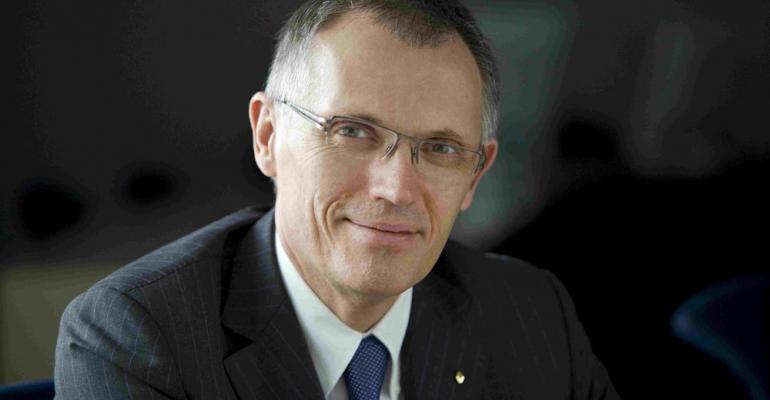PARIS – The brutal departure of Renault Chief Operating Officer Carlos Tavares is bringing new attention on CEO Carlos Ghosn and his handling of Renault and the Renault-Nissan Alliance.
After firing Tavares Aug. 29, Ghosn quickly proposed a new organization for Renault management that will replace the COO position, more or less dividing it in two. A chief competitive officer will be in charge of design, engineering, purchasing, manufacturing and quality, and a chief performance officer will be in charge of sales.
Both positions will report to Ghosn and be on the same level as the departments of finance, human resources and the Alliance CEO office.
If Tavares wanted to stay in his job, he should have taken an August vacation instead of agreeing to an interview with Bloomberg. He told the wire service he had ambitions to be a CEO somewhere, and that it wouldn’t happen at Renault because Carlos Ghosn “is here to stay.”
Although he had not talked with Ford or General Motors, Tavares identified the two as auto makers that would be looking for a new CEO. GM’s Dan Akerson is 64 and Ford’s Alan Mulally is 68. Tavares is 55.
The comments clearly annoyed Ghosn and upset Renault workers, and Ghosn got rid of Tavares on Aug. 29.
It is clearly not easy to be No.2 to Ghosn, who is CEO of both Renault and Nissan. After several years of running Renault himself, Ghosn chose Patrick Pelata to be COO in 2008. Pelata, like Tavares, was a lifelong Renault employee, generally admired by others in the organization. But after firing a longtime employee on the false word of Ghosn’s hand-picked security team, Pelata resigned. Tavares replaced him in 2011.
Now Ghosn apparently is rethinking how to organize Renault management, and at the same time the press is raising more questions about Ghosn’s leadership.
France Info notes the renewal of models has been erratic for the past three years, that Renault’s authoritative management style is generating tension throughout the group and there is suspicion everything is being done for Dacia and Nissan, and not for Renault.
The Huffington Post calls the recent flap a battle of egos between car-guy Tavares and manager Ghosn. For example, Tavares wanted a luxury Renault made with Mercedes, but Ghosn decided Mercedes would work with Infiniti.
“With that, we start to doubt the future of the Renault marque without Tavares,” says the Internet publication. “Will the logo be used uniquely on electric vehicles?”
Boursier.com, which normally runs press releases as news, devoted a long article to the Tavares firing, which preceded an 8.8% decline in the price of Renault shares on the French stock exchange.
“Carlos Ghosn’s power to decide is reinforced by Tavares’ departure,” Boursier.com writes. “Besides, the ubiquitous CEO of Renault will assume the interim himself. No doubt the successor to Carlos Tavares will have to be a fine diplomat to find his footing. More than anything else, he must certainly not cross the line of prerogatives of Carlos Ghosn!”
Under Tavares, Renault profits improved unexpectedly in the first half, and several important vehicles were developed, including the large cross/utility to be shown at the Frankfurt auto show next week, and the next Scenic. He also has worked hard to bring back the Alpine brand and develop the Initiale luxury sub-brand.
But his frank ambition and clear analysis that Ghosn won’t be leaving soon doomed his career at Renault. Unions complained that everyone in the company has been asked for a total commitment, and the French minister for economic recovery, Arnaud Montebourg, said, “Like the employees, I was surprised by his comments. There has to be a total engagement.”
Denis Fainsilber, a journalist with the leading business newspaper Les Echos, says Tavares’ remarks were “a way to destabilize the big boss, and not with a very sharp elegance.” And Philippe Houchois, a London analyst with UBS, told Bloomberg the Tavares interview appeared to be a “somewhat bizarre way to put pressure on Renault to take a decision on Ghosn’s succession.”
Ghosn has made himself the glue holding the Renault-Nissan Alliance together, one reason he escaped censure by his boards of directors in the false espionage affair of 2011, despite his personal televised denunciation of the three employees implicated.
Ghosn seems to be moving the Alliance toward a full merger, with more and more elements of Renault and Nissan united in the background, including purchasing and capital development. At the same time, the success of the Alliance has been credited largely to the fact that the two companies are separate.
Renault has the majority of capital in the Alliance, with 43% of Nissan, while Nissan has 15% of Renault. However, since the Alliance began in March 1999, Nissan has grown and Renault has shrunk.
According to WardsAuto data, Nissan produced 3.9 million units in 2012, up 50% from the 2.6 million in 2000. Renault produced 2.0 million units in 2012, down 13% from 2.3 million in 2000. For the Renault brand, the situation is worse, because the total includes about 400,000 units by Dacia and Renault Samsung that were not yet active in 2000.





